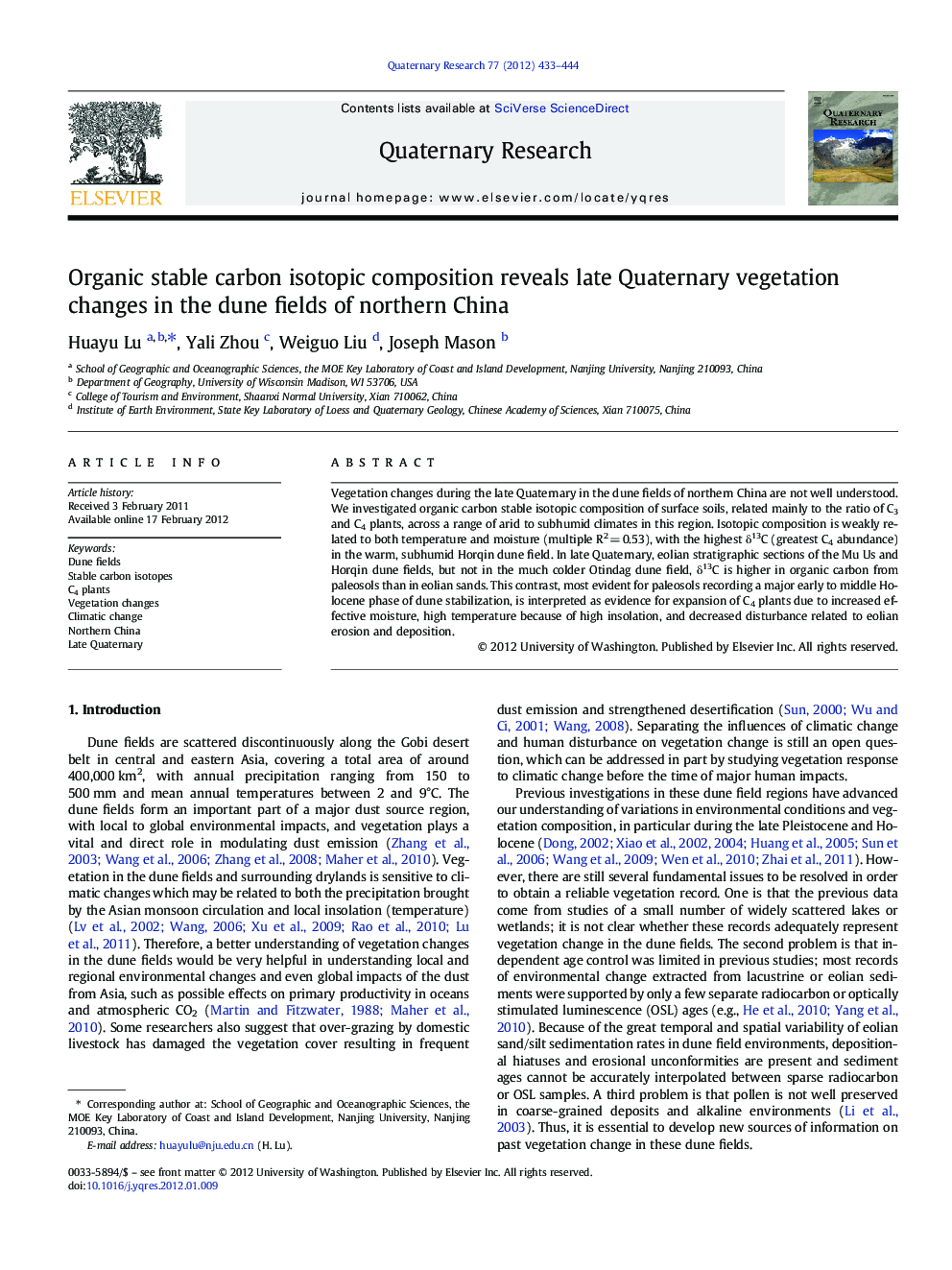| Article ID | Journal | Published Year | Pages | File Type |
|---|---|---|---|---|
| 1045743 | Quaternary Research | 2012 | 12 Pages |
Vegetation changes during the late Quaternary in the dune fields of northern China are not well understood. We investigated organic carbon stable isotopic composition of surface soils, related mainly to the ratio of C3 and C4 plants, across a range of arid to subhumid climates in this region. Isotopic composition is weakly related to both temperature and moisture (multiple R2 = 0.53), with the highest δ13C (greatest C4 abundance) in the warm, subhumid Horqin dune field. In late Quaternary, eolian stratigraphic sections of the Mu Us and Horqin dune fields, but not in the much colder Otindag dune field, δ13C is higher in organic carbon from paleosols than in eolian sands. This contrast, most evident for paleosols recording a major early to middle Holocene phase of dune stabilization, is interpreted as evidence for expansion of C4 plants due to increased effective moisture, high temperature because of high insolation, and decreased disturbance related to eolian erosion and deposition.
